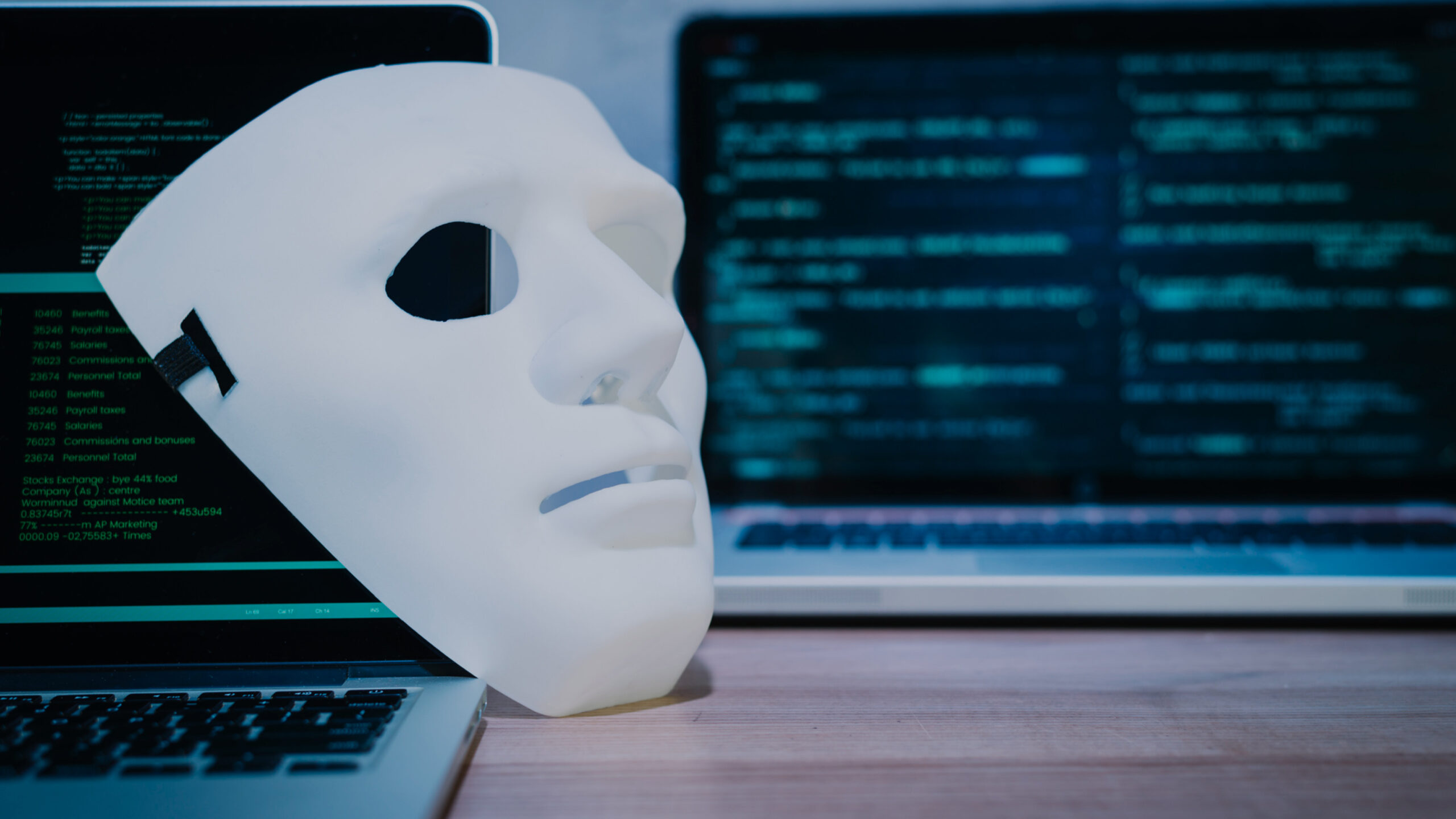#FactCheck - Uncovered: Viral LA Wildfire Video is a Shocking AI-Generated Fake!
Executive Summary:
A viral post on X (formerly Twitter) has been spreading misleading captions about a video that falsely claims to depict severe wildfires in Los Angeles similar to the real wildfire happening in Los Angeles. Using AI Content Detection tools we confirmed that the footage shown is entirely AI-generated and not authentic. In this report, we’ll break down the claims, fact-check the information, and provide a clear summary of the misinformation that has emerged with this viral clip.

Claim:
A video shared across social media platforms and messaging apps alleges to show wildfires ravaging Los Angeles, suggesting an ongoing natural disaster.

Fact Check:
After taking a close look at the video, we noticed some discrepancy such as the flames seem unnatural, the lighting is off, some glitches etc. which are usually seen in any AI generated video. Further we checked the video with an online AI content detection tool hive moderation, which says the video is AI generated, meaning that the video was deliberately created to mislead viewers. It’s crucial to stay alert to such deceptions, especially concerning serious topics like wildfires. Being well-informed allows us to navigate the complex information landscape and distinguish between real events and falsehoods.

Conclusion:
This video claiming to display wildfires in Los Angeles is AI generated, the case again reflects the importance of taking a minute to check if the information given is correct or not, especially when the matter is of severe importance, for example, a natural disaster. By being careful and cross-checking of the sources, we are able to minimize the spreading of misinformation and ensure that proper information reaches those who need it most.
- Claim: The video shows real footage of the ongoing wildfires in Los Angeles, California
- Claimed On: X (Formerly Known As Twitter)
- Fact Check: Fake Video
Related Blogs
.webp)
Introduction
Personalised advertisements deploy a mechanism that derives from the collection of the user’s data. Although it allows for a more tailored user experience, one cannot ignore the method through which this is achieved. Recently, as per a report by the Indian Express on 13th November 2024, Meta has come up with a less personalised ad option on Facebook and Instagram for its users in the European Union (EU). This was done due to the incompatibility of their previous ad offer with the EU’s Digital Markets Act (DMA).
Relevant Legislation
In October 2023, Meta came up with a “Pay or Consent” option for their users in the EU. It gave the users two options: either to pay a monthly subscription fee to avail of the ad-free usage variant of Facebook and Instagram, or to give consent to see personalised ads based on the user’s data. This consent model was introduced in their attempts to comply with the EU’s DMA. However, this was found to be incompatible with the said mandate, according to the EU regulators, as they believed that the users should not only have the option to consent to ads but also have access to less personalised but equivalent alternatives. It is this decision that pushed Meta to come up with less personalised ad options for users in the EU. The less-personalised ad option claims to rely on limited data and show ads that are only based on the context of what is being viewed i.e. during a Facebook or Instagram session requiring a minimum set of data points such as location, age, gender, and the user’s engagement with the ads. However, choosing this option also allows for such ads to be less skippable.
The EU’s Digital Markets Act came into force on November 1, 2022. The purpose was to make the digital marketing sector fairer and in doing so, identify what they consider to be “Gatekeepers” (core platform services such as messenger services, search engines, and app stores) and a list of do’s and don’ts for them. One of them, applicable to the case mentioned above, is the effective consent required by the user in case the gatekeeper decides to target advertisements enabled by tracking the users' activity outside the gatekeeper's core platform services.
The Indian Context
Although no such issues have been raised in India yet, it is imperative to know that in the Indian context, the DPDP (Digital Personal Data Protection) Act 2023 governs personal data regulation. This includes rules for Data Fiduciaries (those who, alone or in partnership with others, determine the means and purpose of processing personal data), the Data Principal (those who give data), Consent Managers, and even rules regarding processing data of children.
CyberPeace Recommendations:
At the level of the user, one can take steps to ensure limited collection of personal data by following the mentioned steps:
- Review Privacy Settings- Reviewing Privacy settings for one’s online accounts and devices is a healthy practice to avoid giving unnecessary information to third-party applications.
- Private Browsing- Browsing through private mode or incognito is encouraged, as it prevents websites from tracking your activity and personal data.
- Using Ad-blockers- Certain websites have a user option to block ads when the user first visits their page. Availing of this prevents spam advertisements from the respective websites.
- Using VPN- Using Virtual Private Networks enables users to hide their IP address and their data to be encrypted, preventing third-party actors from tracking the users' online activities
- Other steps include clearing cookies and cache data and using the location-sharing feature with care.
Conclusion
Meta’s compliance with the EU’s DMA signals that social media platforms cannot circumnavigate their way around rules. Balancing the services provided while respecting user privacy is of the utmost importance. The EU has set precedence for a system that respects this and can be used as an example to help set guidelines for how other countries can continue to deal with similar issues and set standards accordingly.
References
- https://indianexpress.com/article/technology/tech-news-technology/meta-less-personalised-ads-eu-regulatory-demands-9667266/
- https://rainmaker.co.in/blog/view/the-price-of-personalization-how-targeted-advertising-breaches-data-privacy-and-challenges-the-gdprs-shield
- https://www.infosecurity-magazine.com/magazine-features/fines-data-protection-violations/
- https://www.forbes.com/councils/forbestechcouncil/2023/09/01/the-landscape-of-personalized-advertising-efficiency-versus-privacy/
- https://iapp.org/news/a/pay-or-consent-personalized-ads-the-rules-and-whats-next
- https://economictimes.indiatimes.com/news/how-to/how-to-safeguard-privacy-in-the-era-of-personalised-ads/articleshow/102748711.cms?from=mdr
- https://www.business-standard.com/technology/tech-news/facebook-instagram-users-in-europe-can-opt-for-less-personalised-ads-124111201558_1.html
- https://digital-markets-act.ec.europa.eu/about-dma_en

Introduction
India & Bangladesh have adopted proactive approaches, focusing on advancing cyber capacity building in the region. Bangladeshi and Indian cybersecurity experts have emphasised the importance of continuous technology training to protect the digital space from growing cyber-attacks and threats. They call for greater collaboration to share knowledge and expertise in cyber resilience, network vulnerability, and cyber risk assessment. The Cyber-Maitree 2023 event held in Dhaka aimed to enrich and build capacity to counter cyber-attacks and threats. The senior director of India's Computer Emergency Response Team acknowledged the growing dependence on cyberspace and the need for increased preparedness as critical infrastructures, energy systems, banks, and utilities are connected to the internet. Recently, Bangladesh Cyber Security Summit 2024, organised by Grameenphone, was held in Dhaka on March 5th, 2024. Such collaborative dialogues between the countries serve as a shining example of cooperation between the governments of Bangladesh and India, serving as a platform for knowledge sharing, capacity building, and international cooperation in cyber security.
Cyber Maitree held in 2023
In 2023, India and Bangladesh held 'Cyber Maitree 2023', an initiative hosted by the ICT Division of the Bangladeshi Government, to address cybersecurity challenges in a rapidly globalising world characterised by digitisation. The event, which translates to "Cyber Friendship," was an interface for cybersecurity experts and aspirants from both nations, creating an avenue for extensive training, practical exercises, and a dynamic exchange of information. We need to emphasise the importance of bolstering digital safety as both nations grapple with the rapid digitisation of the world.
India-Bangladesh joint efforts aim to fortify cyber resilience, pinpoint potential network vulnerabilities, bolster rigorous risk assessments, and illuminate the landscape of cyber threats. It encompasses various sectors, including cybersecurity, artificial intelligence, ICT, and IT-driven human resource expansion. The growing camaraderie between India and Bangladesh has been evident through strategic engagements, such as the India-Bangladesh Startup Bridge and the establishment of 12 High Tech Parks in Bangladesh.
Highlights of the India-Bangladesh MoUs for Cyber Security Cooperation
In 2017, India and Bangladesh signed a Memorandum of Understanding (MoU) focused on cyber security cooperation.
In 2022, Both nations crafted a Memorandum of Understanding (MoU), highlighting collaboration in spheres such as e-governance, e-public service delivery, research, and development. A separate agreement was also inked focusing on mutual information sharing pertaining to cyber-attacks and incidents. The first MoU aims to provide a framework for training Bangladesh Railway employees at Indian Railways' training institutes, including field visits. The Indian Railways will coordinate with officials from the Ministry of Railways, Government of Bangladesh to improve training facilities in Bangladesh. The second MoU focuses on collaboration in IT systems, for the Bangladesh Railway. The Ministry of Railway, Government of India, will offer IT solutions for passenger ticketing, freight operations, train inquiry systems, asset management digitisation, HR and finance infrastructure. The MoUs aim to strengthen the friendship bond between India and Bangladesh and promote friendly cooperation in the railway sector.
Way Ahead
Zunaid Ahmed Palak, State Minister for Posts, Telecom and ICT, Bangladesh, has announced that Bangladesh and India will collaborate to ensure the safety of the cyber world. The two countries are expected to sign a final agreement within the next three to six months. He stressed the importance of attracting investments in the postal, telecommunication, and IT sectors. He also highlighted the strong ties between Bangladesh and India. He also announced that 12 high-tech parks will be constructed in Bangladesh with an Indian Line of Credit, starting operation by 2025. He further referred to the Indian Cyber Emergency Response Team (CERT), and said "We are very much enthusiastic in fighting against the cyber attacks and crimes as the team is now working with us".
Bangladesh Cyber Security Summit 2024
The Bangladesh Cyber Security Summit 2024, organised by Grameenphone, was held in Dhaka on 5th March 2024, focusing on cybersecurity issues and opportunities, fostering collaboration between government, private organisations, industry experts, and sponsors investing in Bangladesh's digital future.
Conclusion
India and Bangladesh share a common vision for a secure digital future, focusing on cybersecurity collaboration to safeguard shared aspirations and empower nations to thrive in the digital age. We must emphasise the need to fortify digital defenses, leveraging expertise, innovation, and collaboration to secure interconnected futures. Collaborative relations in Information and Communication Technology and Cyber Security will strengthen digital defense and establish cyber resilience.
References:
- https://caribbeannewsglobal.com/bangladesh-and-india-call-for-more-cyber-security-training/?amp=1
- https://www.indianewsnetwork.com/en/20231005/bangladesh-and-india-strengthen-ties-through-cyber-maitree-2023
- https://www.bssnews.net/news-flash/150763
- https://digibanglatech.news/english/bangladesh-english/125439/
- https://www.mea.gov.in/Portal/LegalTreatiesDoc/BG17B3024.pdf
- https://digibanglatech.news/english/bangladesh-english/125439/
- https://www.tbsnews.net/tech/ict/bangladesh-india-work-together-cyber-security-palak-712182

Introduction
Deepfakes are artificial intelligence (AI) technology that employs deep learning to generate realistic-looking but phoney films or images. Algorithms use large volumes of data to analyse and discover patterns in order to provide compelling and realistic results. Deepfakes use this technology to modify movies or photos to make them appear as if they involve events or persons that never happened or existed.The procedure begins with gathering large volumes of visual and auditory data about the target individual, which is usually obtained from publicly accessible sources such as social media or public appearances. This data is then utilised for training a deep-learning model to resemble the target of deep fakes.
Recent Cases of Deepfakes-
In an unusual turn of events, a man from northern China became the victim of a sophisticated deep fake technology. This incident has heightened concerns about using artificial intelligence (AI) tools to aid financial crimes, putting authorities and the general public on high alert.
During a video conversation, a scammer successfully impersonated the victim’s close friend using AI-powered face-swapping technology. The scammer duped the unwary victim into transferring 4.3 million yuan (nearly Rs 5 crore). The fraud occurred in Baotou, China.
AI ‘deep fakes’ of innocent images fuel spike in sextortion scams
Artificial intelligence-generated “deepfakes” are fuelling sextortion frauds like a dry brush in a raging wildfire. According to the FBI, the number of nationally reported sextortion instances came to 322% between February 2022 and February 2023, with a notable spike since April due to AI-doctored photographs. And as per the FBI, innocent photographs or videos posted on social media or sent in communications can be distorted into sexually explicit, AI-generated visuals that are “true-to-life” and practically hard to distinguish. According to the FBI, predators often located in other countries use doctored AI photographs against juveniles to compel money from them or their families or to obtain actual sexually graphic images.
Deepfake Applications
- Lensa AI.
- Deepfakes Web.
- Reface.
- MyHeritage.
- DeepFaceLab.
- Deep Art.
- Face Swap Live.
- FaceApp.
Deepfake examples
There are numerous high-profile Deepfake examples available. Deepfake films include one released by actor Jordan Peele, who used actual footage of Barack Obama and his own imitation of Obama to convey a warning about Deepfake videos.
A video shows Facebook CEO Mark Zuckerberg discussing how Facebook ‘controls the future’ with stolen user data, most notably on Instagram. The original video is from a speech he delivered on Russian election meddling; only 21 seconds of that address were used to create the new version. However, the vocal impersonation fell short of Jordan Peele’s Obama and revealed the truth.
The dark side of AI-Generated Misinformation
- Misinformation generated by AI-generated the truth, making it difficult to distinguish fact from fiction.
- People can unmask AI content by looking for discrepancies and lacking the human touch.
- AI content detection technologies can detect and neutralise disinformation, preventing it from spreading.
Safeguards against Deepfakes-
Technology is not the only way to guard against Deepfake videos. Good fundamental security methods are incredibly effective for combating Deepfake.For example, incorporating automatic checks into any mechanism for disbursing payments might have prevented numerous Deepfake and related frauds. You might also:
- Regular backups safeguard your data from ransomware and allow you to restore damaged data.
- Using different, strong passwords for different accounts ensures that just because one network or service has been compromised, it does not imply that others have been compromised as well. You do not want someone to be able to access your other accounts if they get into your Facebook account.
- To secure your home network, laptop, and smartphone against cyber dangers, use a good security package such as Kaspersky Total Security. This bundle includes anti-virus software, a VPN to prevent compromised Wi-Fi connections, and webcam security.
What is the future of Deepfake –
Deepfake is constantly growing. Deepfake films were easy to spot two years ago because of the clumsy movement and the fact that the simulated figure never looked to blink. However, the most recent generation of bogus videos has evolved and adapted.
There are currently approximately 15,000 Deepfake videos available online. Some are just for fun, while others attempt to sway your opinion. But now that it only takes a day or two to make a new Deepfake, that number could rise rapidly.
Conclusion-
The distinction between authentic and fake content will undoubtedly become more challenging to identify as technology advances. As a result, experts feel it should not be up to individuals to discover deep fakes in the wild. “The responsibility should be on the developers, toolmakers, and tech companies to create invisible watermarks and signal what the source of that image is,” they stated. Several startups are also working on approaches for detecting deep fakes.


